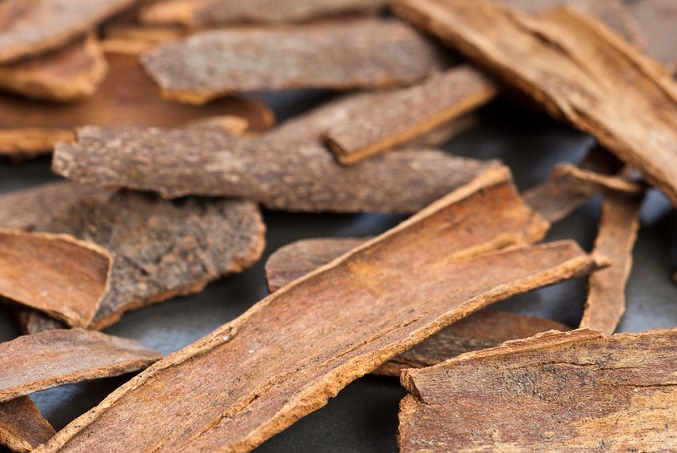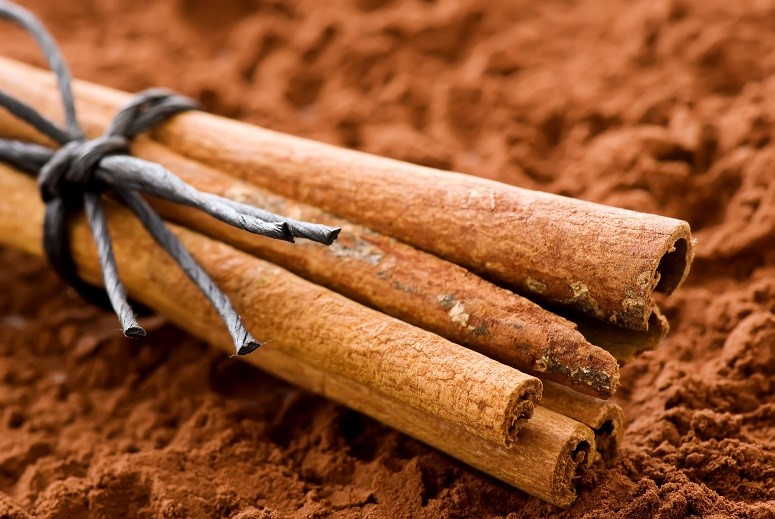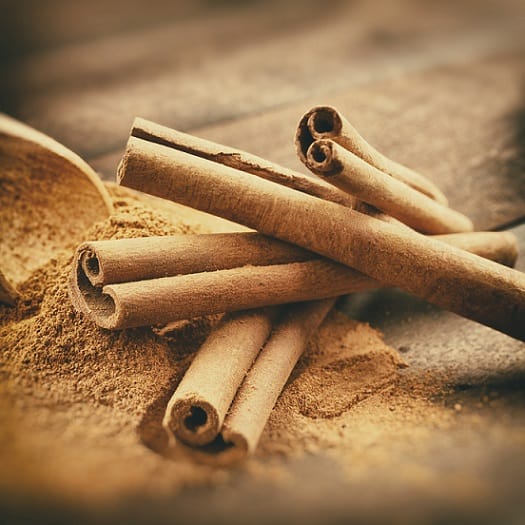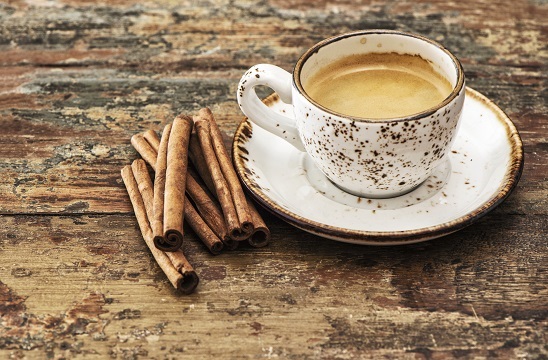 3 years ago, we discussed how topical cinnamon had an amazing acne power that nobody could have predicted.
3 years ago, we discussed how topical cinnamon had an amazing acne power that nobody could have predicted.
A study pulled back the curtain of mystery to reveal that cinnamaldehyde (0.7-0.8% of cinnamon) boosted collagen, the youthfulness protein, and in particular, the wound-healing type 1 collagen.
Its power was also pinpointed: increasing the hormone IGF-1 in the epidermis. Overnight, cinnamon made a huge leap forward as an acne remedy.
It’s the kind of power that ancient tribes could have never deduced through experience. Calming a red wound with honey is one thing, but Nefertiti and friends didn’t know what collagen was, let alone how to increase it.
Since then though, no new studies on collagen have materialised, except maybe in a teenager’s hastily scrawled diary somewhere. However, we now have something better: the first study directly on acne. It’s the day we’ve been waiting for for years.
There’s one slight problem though – we also have fresh evidence for side effects.
Cinnamon is becoming more and more everything. It’s becoming riskier, but also more promising, and tempting. We have finally ascended to the next level in the cinnamon game, inching closer to the truth, so here are the latest developments.
January 2019 – a study directly on acne
Scientists converged with a mindlessly simple goal, but undoubtedly everyone’s favourite goal: to test whether cinnamon reduced acne when rubbed into the skin.
It was real cinnamon bark, purchased from a market in Tehran. It was cobbled together into a recipe containing methyl paraben, carbomer 940, propylene glycol, and EDTA for stability reasons. I wouldn’t recommend these chemicals for your own skin every night, but they’re not strong enough to damage this study’s reliability.
The subjects were 20 human beings, 18 female and 2 males, aged 20-40 with 21.4 being the average. Their orders: to apply cinnamon gel to their skin, twice daily, for 8 weeks. They also filled in a questionnaire, measuring their satisfaction from 1 to 10.
One way or another, this was a turning point. Either cinnamon would ascend to a new level of acne greatness, or it would be cast down and forgotten forever.
It was a crossroads for cinnamon, and here’s what happened. After 2 months of cinnamon application, overall acne lesions fell by 47%.
Non-inflammatory acne fell by 48%, the whiteheads which you love to burst, while inflammatory acne fell by 42%, the red, angry pimples which taunt you because you can’t burst them. 35% of patients lost 50% of their pimples or more, which was described as “statistically significant”.
The most unexpected result was oily skin. Specifically, that it massively improved, by approximately 26% after 4 weeks and 39% after 8 weeks.
The lack of a placebo was slightly dodgy, but when acne fell so resoundingly, this is easier to forgive.
Even acne bacteria was hinted to have fallen. The scientists’ radars detected much less red fluorescence, the colour of the porphyrin molecules that p.acnes naturally produces.
The study concluded that “topical cinnamon gel is efficient and safe for the treatment of mild-to-moderate facial acne“.
The acne-clearing analysis
 Centuries after a random Indian peeled cinnamon bark off a tree and tried rubbing it into her face (this must have happened a few times), its acne-clearing powers have finally been confirmed.
Centuries after a random Indian peeled cinnamon bark off a tree and tried rubbing it into her face (this must have happened a few times), its acne-clearing powers have finally been confirmed.
It isn’t totally unexpected; the cinnamon spice is extremely dense in rare nutrients like curcuminoids. Antibacterial studies have long been floating around, but a real experiment on acne patients is far better. Many topical treatments have a spoiler compound that scuppers benefits in the real world, but cinnamon clearly doesn’t.
The sample size was slightly small, but otherwise, the reliability was supreme. Better, the sebum power popped up from nowhere, just like collagen did three years ago. History is repeating itself, and the same happened with turmeric (thanks to its curcuminoids), which lowers sebum by 20% after 5 weeks.
Strictly, this is a topical article, but what if cinnamon can digest, migrate to the face and settle there, as plant compounds like lycopene do? It would also reduce sebum when eaten.
Furthermore, one of cinnamon’s signature properties as a food, for clearing acne from the inside out, is lowering insulin levels, by 34% in one study. Insulin increases sebum like no other, so cinnamon could become a double strength, oil reducing extravaganza. Sweet potatoes are another one, combining insulin sensitivity with vitamin A, but cinnamon’s insulin-lowering powers outstrip them easily. Hopefully, the sebum reduction won’t be forgotten, as it seems the collagen power has.
It’s a great day for cinnamon and acne… or is it?
Cinnamon is gaining dangers too
Unfortunately, the scientists also ran a parallel experiment, where they tested cinnamon’s side effects.
We’ve said it before: unusual acne powers open up unusual acne dangers, and that’s a concept we’re about to test. 15 volunteers rubbed cinnamon into a 3cm by 3cm area of their left forearm, and a placebo into the right, to disprove unusually sensitive skin which would react to even a falling feather. They repeated this twice daily for a week.
With 1% concentration cinnamon, chaos broke out. 1 patient reported severe swelling, burning and itching, and another moderate swelling, burning and itching. 3 more patients experienced mild burning, making for 5/15 patients having side effects. The scientists stayed calm and reduced the concentration to 0.5%. This time, 3 patients suffered mild burning and swelling and 2 only mild swelling.
Because of this, the scientists decided to use 0.5% cinnamon for the main acne experiment…
…and this time, the side effects were even worse, at least initially. 13 of 20 patients reported mild burning within 10 days and a further 11 reported facial redness within just 10 minutes.
We could work around this. Tea tree oil is known for irritation – it’s also known for clearing acne. However, the real standout danger was lowering trans-epidermal water loss (TEWL), AKA your skin’s moisture retention.
The TEWL average was 17.29 at week 0, rising only slightly to 17.97. Then it jumped to 21.14, and with it, skin hydration fell from 64.17, to 58.64, and finally, 54.11. The hydration and TEWL matched each others deterioration.
The only saving grace is that cinnamon lowered erythma (swelling), falling from 410.05 at week 0 to 348.73 at week 8.
Also, the patient satisfaction questionnaire averaged at 5.98 out of 10, which could be better, but shows that nobody had any true disasters. Ultimately, their pimples did improve, TEWL loss or not.
Real world tales
 What’s responsible for these side effects? We don’t know the power, but we do know the compound.
What’s responsible for these side effects? We don’t know the power, but we do know the compound.
It’s the original collagen-boosting saviour – it’s cinnamaldehyde, which has apparently been a suspected global skin irritation villain for decades now. For example, while scouring the vast central megavault of science (the location I cannot disclose), I dusted off the following long-forgotten stories:
ONE: an 11 year old boy carrying a cinnamon oil vial in his pocket, which he accidentally shattered. After forgetting to clean the area, a blistered rash materialised on his thigh two days later, surrounded by a 3cm wide first degree burn (study).
TWO: a baker who arrived at the doctor with burn lesions covering his face. His speciality was cinnamon flavoured buns, and the vapour had been floating around his counter. It’s even rash-tastic when airborne.
THREE: a 42 year old woman with red and white lesions covering her gums. Questioning revealed an obsession with cinnamon-flavoured chewing gum, and after quitting, the lesions quickly disappeared. Apparently, a rise in “stomatitis”, inflamed gums and lips, was once linked to cinnamon oil’s popularity as a chewing gum ingredient.
FOUR: as cinnamon oil became more popular in toothpaste, mouthwash, baking, and ice cream, countless cases of rashes reached the ears of scientists, from countries all over the world. Cinnamon is popular for its cinnamon aroma.
Isolated cinnamaldehyde causes very similar rashes, and while the precise reason is unknown, it’s a fairly typical irritant, triggering sudden inflammatory responses. Sensitive skin will doubtlessly respond the most.
Side effects analysis
This study contains something else completely unexpected, something more dangerous. Like the collagen, like the sebum, there was nothing to predict this possible side effect.
TEWL is essentially the amount of moisture being lost through your skin’ outer layer, and into the atmosphere where it floats away to destinations unknown. It’s the interplay between hyaluronic acid, the skin barrier’s tight junction proteins, and more, but the end result is flakiness, dryness and cracking. It’s exactly what you don’t want for a collagen booster. Cinnamon could fix one cosmetic problem, but then push you into another.
Worse, the TEWL decrease intensified as the months went by. To boost collagen you need months of consistent application.
No patient actually reported dryness, but TEWL is a long term phenomenon. That’s also why rubbing cinnamon into your arm for a patch allergy test, my standard recommendation, won’t work.
So are we doomed? It’s hard to tell, because we don’t know the exact cause. The mystery is back, but it’s now backfiring on us. Avocado oil weakening TEWL would make perfect sense; like topical olive oil, it’s far too high in oleic acid.
You can’t just combine cinnamon with grapeseed oil to instantly replenish the lost moisture. It might work, but not if cinnamon destabilises your hyaluronic acid reserves, or messes with the genes behind tight junction proteins.
Irritation is actually the less worrying of the two, because it’s just a random reaction. It’s like linalyl acetate in lavender oil, or solanine in potatoes. It’s nasty, but only affects a small minority. It’s easy to spot, and therefore easy to control.
True, your inflammatory chemicals could still subtly increase, but overall, it’s the TEWL increase which could spoil our entire acne master plan.
Cinnamaldehyde might be the accutane of the natural world. A phenom curing multiple acne factors at once, like sebum, bacteria and weak collagen, but also coming with treacherous side effects. The rewards of cinnamon are now higher, but so are the risks. The one advantage is that accutane is swallowed while cinnamaldehyde is applied; fertility damage is beyond its reach.
Antibacterial update 2020
 We also discussed 5 years ago how as a food, cinnamon is spectacular for wiping out unhealthy gut bacteria. Cinnamaldehyde warps the structure of cell membranes, giving them an irregular shape, and even tackles the dreaded candida.
We also discussed 5 years ago how as a food, cinnamon is spectacular for wiping out unhealthy gut bacteria. Cinnamaldehyde warps the structure of cell membranes, giving them an irregular shape, and even tackles the dreaded candida.
Therefore, its topical antibacterial prospects were always good, and in 2020, a demented attempt to create a cinnamon-flavoured make up finally proved them.
The newly beauty-obsessed scientists invented 4 different recipes, hunting for the best smelling, best feeling, and best concealing formula. Their other ingredients included pigments, titanium dioxide, candelilla wax and beeswax.
The idea was presumably a makeup bottle to make you beautiful and suppress bacteria in one fell swoop, allowing women to walk around with an acne shield for the entire day. But anyway, the inhibition zone was measured, the area in which p.acnes could no longer grow. The acne antibiotic clindamcyin achieved a 44.44mm diameter, trustworthy as it is (but a tricky character of many side effects). Tea tree oil was surprisingly weak, at 14.67mm. Cinnamon oil created a p.acnes desert 36.75mm wide.
It also defeated eucalyptus oil and galangal oil. What on earth is galangal? It’s called Thai ginger or Siamese ginger, and it’s a member of the same family. It’s currently on schedule to become a beauty craze in 2034 (according to a prophecy I just made).
Most fascinatingly, it’s normally tea tree oil which is the nemesis of p.acnes, but today, cinnamon oil just edged it out. The only caveat is that the tea tree oil was unusually weak. Therefore, I wouldn’t be surprised if they’d picked a rogue dodgy batch, but that doesn’t detract from cinnamon oil’s greatness.
A 2010 study was equally promising. Among 10 essential oils, thyme oil (another one with potential) was strongest against p.acnes, but cinnamon and rose oil were close behind. The train is gathering steam.
Once again, cinnamon is gaining, gaining, gaining. It’s gaining clear skin power, more and more of it, and it’s gaining dangers that you cannot predict.
The verdict – 2020 update
That’s why your new, updated cinnamon strategy is simple. It has more potential for clearing acne than ever, but you also can’t ignore the risks.
Getting reckless would be a fatal mistake. That’s what’s annoying; the very second cinnamon finally enters the storied halls of proven acne remedies, its skin-drying dangers also pop up.
The TEWL decrease and the benefits are probably caused by the same compound – cinnamaldehyde. Once we understand the TEWL-decreasing pathway, then we’ll recommend a strategy against it, but right now that’s not possible. The other hopeful possibility is that the TEWL result was a fluke.
As for the wider acneverse, cinnamon’s status hasn’t changed for years. It’s still trundling along as the mascot of endless DIY recipes alongside honey, yogurt and turmeric.
Many of these combos are scientifically sound, but I’m pretty sure they got lucky by slapping random ingredients together, because the next second they’ll be praising lemon juice. Many websites recommend cinnamon for clear skin, which is smart, but the precise reasons are very vague and fuzzy. Antioxidants are mentioned and the word “soothing” pops up a lot, but the new studies haven’t filtered through yet.
Annoyingly, these websites usually declare every substance to be a soothing miracle, from cucumber to bananas, to the point where your head is spinning, skepticism kicks in and you become numb to all of it.
Rest assured though, that cinnamon has very real powers, for better or worse.
Thanks for reading!